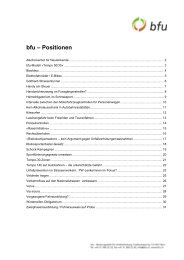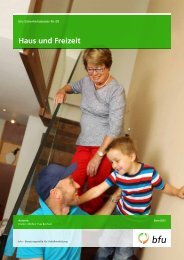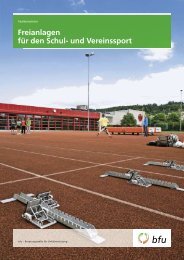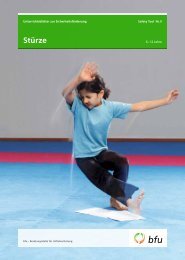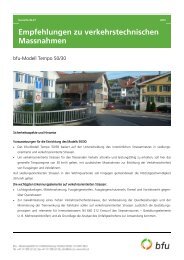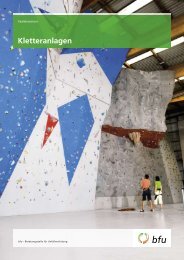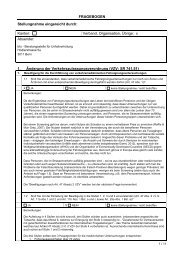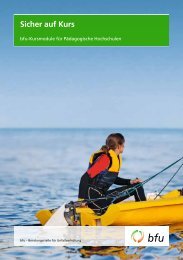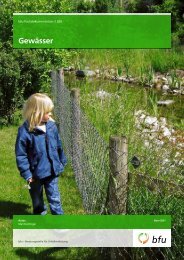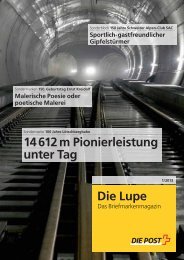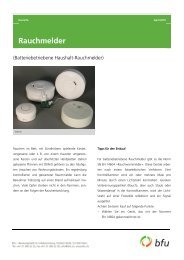Persönliche Schutzausrüstung im Schneesport – Erhebung ... - BfU
Persönliche Schutzausrüstung im Schneesport – Erhebung ... - BfU
Persönliche Schutzausrüstung im Schneesport – Erhebung ... - BfU
Erfolgreiche ePaper selbst erstellen
Machen Sie aus Ihren PDF Publikationen ein blätterbares Flipbook mit unserer einzigartigen Google optimierten e-Paper Software.
Zusammenfassung / Résumé / Riassunto / Abstract 117<br />
4.4.1 Factors affecting wearing or non-wearing<br />
A multiple logistical regression analysis identified the following variables as significant in the<br />
probability of helmet wearing:<br />
Demographic variables<br />
Age and sex: age and sex are <strong>im</strong>portant predictors for helmet wearing: young skiers and snow-<br />
boarders wear a helmet far more often than older people, men far more often than women. In fact<br />
snowboarders use helmets more frequently than skiers but the type of sport is not a significant predictor.<br />
Thus in the random samples, age and sex have a decisive effect on the variation in helmetwearing<br />
quotas for both skiing and snowboarding<br />
Ability-related variables<br />
Level of skill: experienced skiers and snowboarders wear helmets far more often than beginners or<br />
experts.<br />
Training: snow sportsmen and women who have already attended a skiing or snowboarding course<br />
protect themselves far more often than those without relevant training.<br />
Motives: those interested in <strong>im</strong>proving their technical skills wear a helmet far more frequently than<br />
those lacking this motivation.<br />
Accident-related variables<br />
Injury experience: personal experience of an injury as a result of a snow-sport accident leads to<br />
more frequent use of a helmet.<br />
Fear of injury: it is plausible that most people practising snow-sport state that they wear a helmet as<br />
protection against injury. The most frequent reason given for non-wearing is that no helmet is<br />
needed as no risks are taken.<br />
Attitude variables<br />
The attitude towards the features of a helmet is by far the most <strong>im</strong>portant factor influencing the<br />
probability of a helmet being worn.<br />
Wearer comfort: rating of wearer comfort is an especially <strong>im</strong>portant factor. Non-wearers are convinced<br />
that a helmet must be very uncomfortable whereas the majority of wearers are satisfied with<br />
wearer comfort.<br />
Unnecessary: the attitude of a not needing a helmet because of being careful while engaged in the<br />
sport is deeply rooted in a large section of skiers and snowboarders.<br />
Feeling of freedom: helmet wearers do not feel that their freedom is restricted. Non-wearers however<br />
assume that a helmet would restrict the feeling of freedom.



